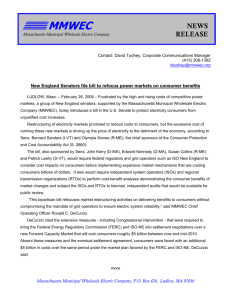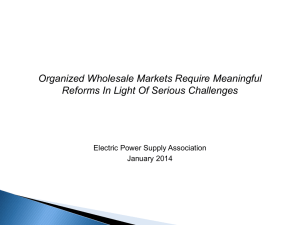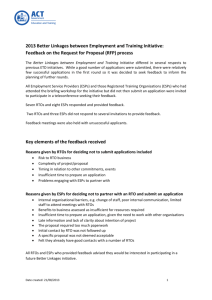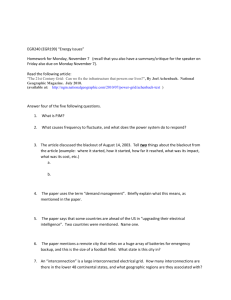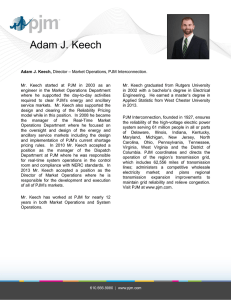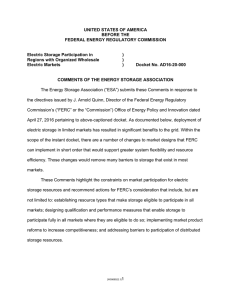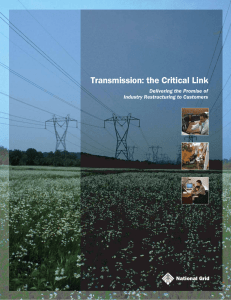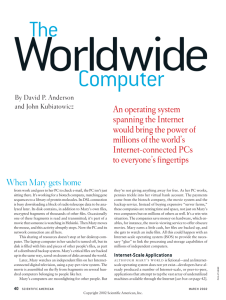here - Energy Storage Association
advertisement
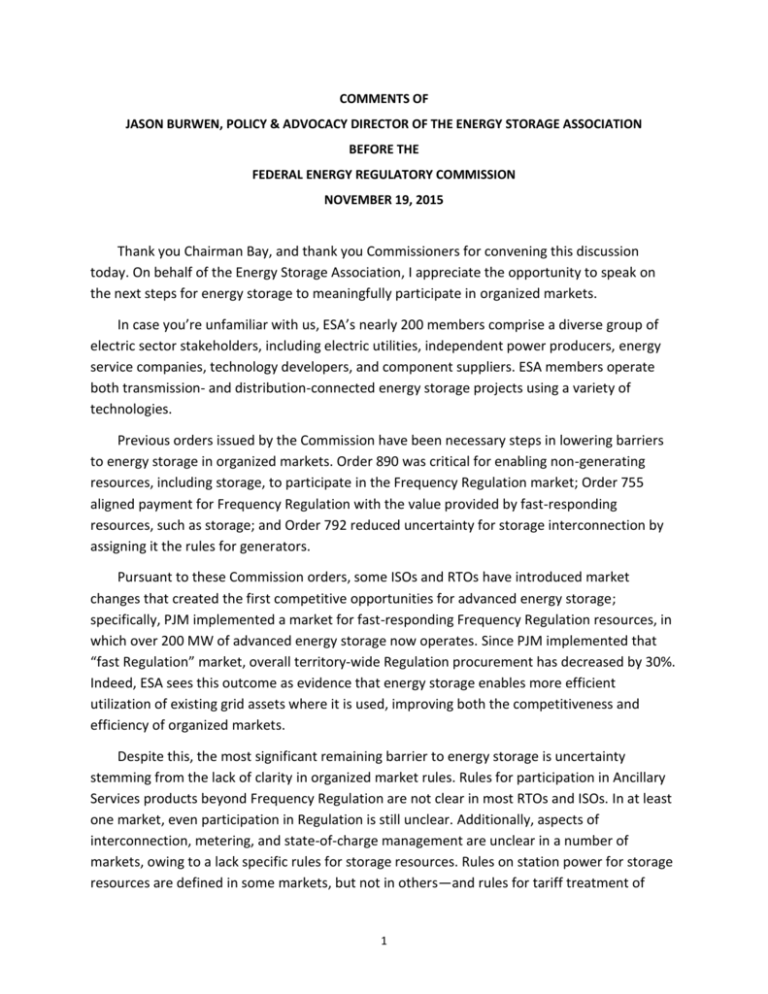
COMMENTS OF JASON BURWEN, POLICY & ADVOCACY DIRECTOR OF THE ENERGY STORAGE ASSOCIATION BEFORE THE FEDERAL ENERGY REGULATORY COMMISSION NOVEMBER 19, 2015 Thank you Chairman Bay, and thank you Commissioners for convening this discussion today. On behalf of the Energy Storage Association, I appreciate the opportunity to speak on the next steps for energy storage to meaningfully participate in organized markets. In case you’re unfamiliar with us, ESA’s nearly 200 members comprise a diverse group of electric sector stakeholders, including electric utilities, independent power producers, energy service companies, technology developers, and component suppliers. ESA members operate both transmission- and distribution-connected energy storage projects using a variety of technologies. Previous orders issued by the Commission have been necessary steps in lowering barriers to energy storage in organized markets. Order 890 was critical for enabling non-generating resources, including storage, to participate in the Frequency Regulation market; Order 755 aligned payment for Frequency Regulation with the value provided by fast-responding resources, such as storage; and Order 792 reduced uncertainty for storage interconnection by assigning it the rules for generators. Pursuant to these Commission orders, some ISOs and RTOs have introduced market changes that created the first competitive opportunities for advanced energy storage; specifically, PJM implemented a market for fast-responding Frequency Regulation resources, in which over 200 MW of advanced energy storage now operates. Since PJM implemented that “fast Regulation” market, overall territory-wide Regulation procurement has decreased by 30%. Indeed, ESA sees this outcome as evidence that energy storage enables more efficient utilization of existing grid assets where it is used, improving both the competitiveness and efficiency of organized markets. Despite this, the most significant remaining barrier to energy storage is uncertainty stemming from the lack of clarity in organized market rules. Rules for participation in Ancillary Services products beyond Frequency Regulation are not clear in most RTOs and ISOs. In at least one market, even participation in Regulation is still unclear. Additionally, aspects of interconnection, metering, and state-of-charge management are unclear in a number of markets, owing to a lack specific rules for storage resources. Rules on station power for storage resources are defined in some markets, but not in others—and rules for tariff treatment of 1 distribution-connected storage do not exist anywhere, creating additional uncertainty. In addition, organized markets lack a consistent construct for aggregated behind-the-meter storage participation, and the metering and telemetry requirements for such fleets are not cost-appropriate at this time. ESA would like to emphasize there is particularly pronounced uncertainty for Capacity market participation. While Capacity markets do not preclude storage from participating, uncertainty on the treatment of storage poses high potential penalties—thereby discouraging market entry. In PJM and ISO-New England, the requirement to provide Energy for an unspecified, open-ended duration makes it effectively impossible to commit a resource without significant liability. And although California ISO’s Flexible Capacity construct should enable energy storage to qualify for Capacity, it often cannot since it must be bundled with the longer duration requirements of conventional generation. MISO and NYISO have no Capacity storage resource type, nor specific rules for longer-duration storage resources—so not only is participation unclear, but the application of Capacity rules for generators requiring 24/7 Energy capability effectively prohibits energy storage from market participation.. Without rules explicitly for storage, RTOs and ISOs typically default to generation rules for storage resources but then have to tailor their application to account for charging. This creates confusion for storage developers & operators and the potential for differential treatment across different projects. As such, resolving this lack of clarity and consistency is a matter of RTO and ISO implementation. ESA respectfully encourages the Commission to address this implementation gap, for example, by directing RTOs and ISOs to clarify their tariffs to ensure energy storage can participate in markets on a comparable basis with other resources—not unlike Order 719, which directed RTOs and ISOs to enable demand response resources to participate in Ancillary Services on a comparable basis with other resources. In particular, ESA sees a natural progression from the comparability principles of Orders 719 and 890 to extend non-generating resource participation into Capacity markets, and we respectfully encourage the Commission to consider this approach. Another barrier to storage is that markets are not be designed to capture the value storage can offer. For example, start-up and shut-down costs of generators are not typically included in locational marginal prices, but rather paid through non-market uplift payments. By devaluing the locational marginal price, uplift payments effectively lead to under-compensating resources with low or no start-up costs, such as storage. Similarly, while fast-responding resources have made grid operations more efficient and reduced Frequency Regulation procurements in PJM, several RTOs and ISOs do not incorporate speed of dispatch into Regulation, or for that matter spinning and non-spinning reserves—and so that performance value to the system cannot be 2 captured. Ensuring markets capture in their prices the value that performance resources like storage provide would enable greater storage participation. And there are still some rules that, while not specific to storage, meaningfully limit energy storage participation. For example, most RTOs and ISOs lack a Net Zero interconnection policy, in which two resources are allowed to jointly manage production behind a single point of interconnection. This restricts the useful pairing of energy storage to existing generation behind interconnections. Another example: there are limitations on net injections of energy from behind-the-meter resources into wholesale markets. For that matter, hourly scheduling across organized markets and products is an impediment to fully realizing energy storage’s intrahourly capabilities, particularly in Ancillary Services. While these rules may serve an important technical or market-facilitating purpose, they are worth examining for ways to enable useful storage operations that preserve the larger intent of these rules. The other major barrier to energy storage is structural, and relates to the functional classification of storage. Storage still must fit inside existing constructs—generation, transmission, distribution—despite being a separate asset class. Order 784 was the last discussion of this topic, wherein the Commission came up with accounting rules for a storage line item within the generation, transmission, and distribution categories. Yet, energy storage is a resource that can provide multiple services, acting alternatively as generation, load, or transmission and distribution infrastructure. While storage is not a “holy grail” or “silver bullet," it is certainly a uniquely flexible resource. Realizing the value of the full array of services provided by storage will optimize utilization of existing grid assets and maximize reliability and economic benefits to ratepayers. Those outsized opportunities merit the Commission’s consideration on how to incorporate storage into all aspects of grid reliability. To the extent that existing functional classifications are suitable, storage would be best utilized with both a primary classification reflecting its main function, as well as a suitable secondary classification for additional service it can render. For example, we know that storage can act as a generator and contract out capacity as transmission reliability benefits. We know that storage can act as a transmission asset and offer wholesale market products. We can envision storage assets switching classifications as the highest value services to the system change over its lifetime. And so we can envision a future where storage meets transmission reliability needs and receives a regulated rate of return only for that specific part of its operations while simultaneously providing market products—and doing so without adversely impacting reliability. That future is one that increases system flexibility for grid operators and lowers costs to ratepayers. By resolving this issue of functional classification, the Commission will have yet another tool to ensure least-cost, reliable, and sustainable electric service. 3 I thank you all for your consideration of these matters and look forward to your questions. 4
